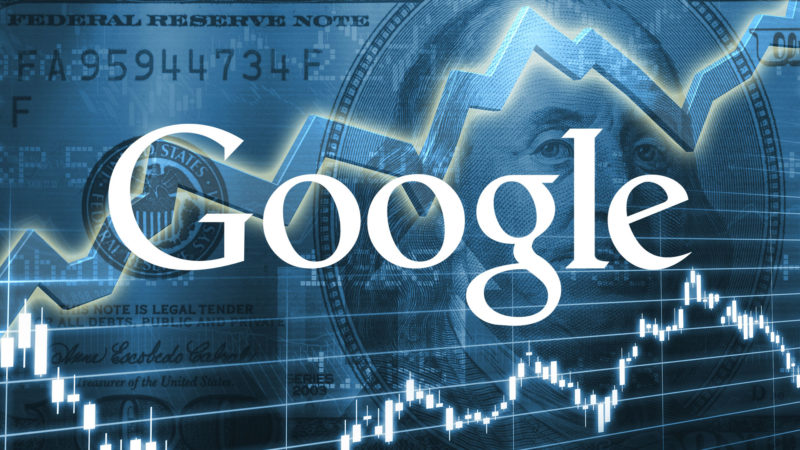Google Beats Expectations With $17.7 Billion, Mobile And YouTube Revs Grow
After search marketing reports showed slowing growth for Google, the market was anticipating a miss or very modest growth. However, Google just announced earnings and profits that beat analyst expectations. Total revenues were $17.7 billion; earnings per share were $6.74. The company said it had roughly $70 billion in cash and cash equivalents on hand. Google shares jumped […]
After search marketing reports showed slowing growth for Google, the market was anticipating a miss or very modest growth. However, Google just announced earnings and profits that beat analyst expectations.
Total revenues were $17.7 billion; earnings per share were $6.74. The company said it had roughly $70 billion in cash and cash equivalents on hand. Google shares jumped in after-hours trading.
Revenue growth was 11 percent year over year (YoY). But paid clicks were up 18 percent and a whopping 30 percent on Google websites. However, CPCs were down 11 percent. The company characterized mobile search performance as “strong” in its release.
Total advertising revenues were just over $16 billion, with “other revenues” (content, devices, etc.) coming in at $1.7 billion.
Earnings Call Data And Remarks:
New CFO Ruth Porat:
Porat is making her first appearance as new Google CFO.
Core search business is very strong. “We continue to close the gap between mobile and desktop search monetization.” YouTube delivered substantial growth. Overall, YouTube watch time is up 60 percent YoY, and mobile watch time has doubled year over year.
Programmatic continued to deliver strong performance “that more than offset lower results in AdSense for search.”
Paid clicks were up 30 percent YoY and 10 percent sequentially, reflecting mobile and YouTube mobile growth.
TAC was 21 percent of total ad revenue, which was down slightly.
Headcount increased 18 percent YoY and 3 percent sequentially. Now there are approximately 57,000 Google employees.
Porat says that Google will continue to bring discipline to costs and managing expenses. She also mentioned “optimization” of capital expenditures.
Chief Business Officer Omid Kordestani:
Company’s growth drivers are “mobile and video” (and programmatic).
Android: 4,000 devices, 500 carriers globally. There are now 50 billion app links within the Google index. Now Cards for more than 100 apps.
Says that 30 percent of Google mobile queries “are related to location.”
YouTube reaches more 18–49-year-olds in the US than any cable network. Average viewing session on mobile is now more than 40 minutes.
Selected Analyst Questions:
Several questions about expense discipline. CFO Porat reiterates that Google will be prioritizing resources and “extending the discipline” that now exists at Google. She’s trying to temper these remarks with statements that Google will continue to pursue growth.
Question about uniting all of Google’s various advertising products. Omid says we want to have “one Google” represented to the customer (advertiser, consumer) — search, display, video and cross-device measurement. We have a “full suite” now, from branding to the conclusion of a transaction (offline most frequently).
Why is YouTube seeing re-acceleration and growth? Omid: YouTube viewers represent one-third of all people on the internet. Watch time is up 60 percent year over year. He doesn’t answer the question but suggests that growth is a byproduct of various trends and critical mass of usage.
Opportunities for Google to “move down the funnel?” Omid: We’re focused on connecting retailers and consumers across screens. We’re trying to find ways to improve the mobile shopping experience and improve mobile conversions for advertisers (e.g., purchases on Google [buy button]). We’re trying to reduce buying friction.
Question about estimated total conversions (online to offline conversion efforts). We’re investing in dynamic products that help bring users to stores and trying to bridge the physical and digital worlds. Case study Target: Mobile search ads greatly influenced in-store sales. One-third of paid search ads resulted in a store visit during holiday 2014.
Porat on closing gap between PC and mobile search monetization: Desktop CPCs and paid clicks not declining, and mobile continues to grow — thus narrowing the gap.
Question about non-US regulatory pressure and potential SERP changes in Europe. Non-answer from Porat re continuing to work with the EC and regulators to address their concerns.
Opinions expressed in this article are those of the guest author and not necessarily MarTech. Staff authors are listed here.
Related stories




